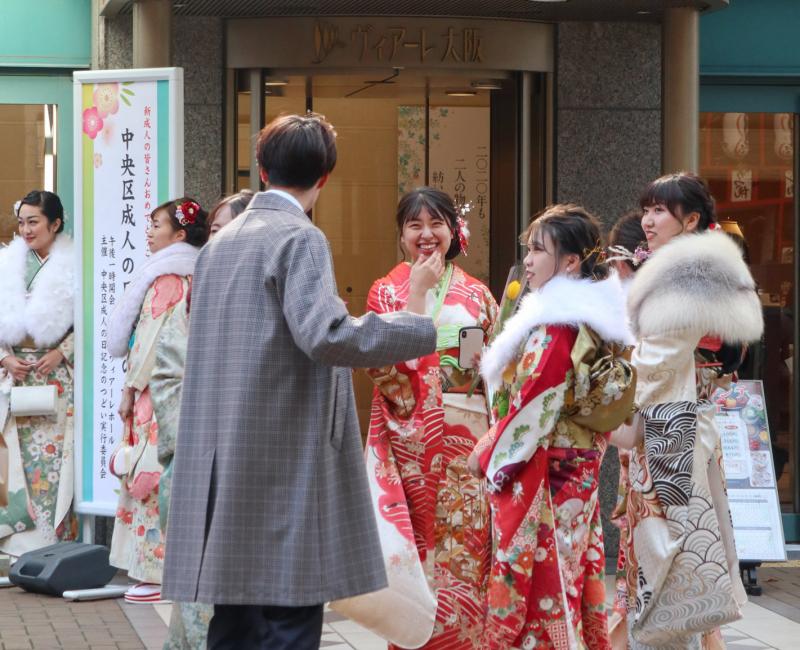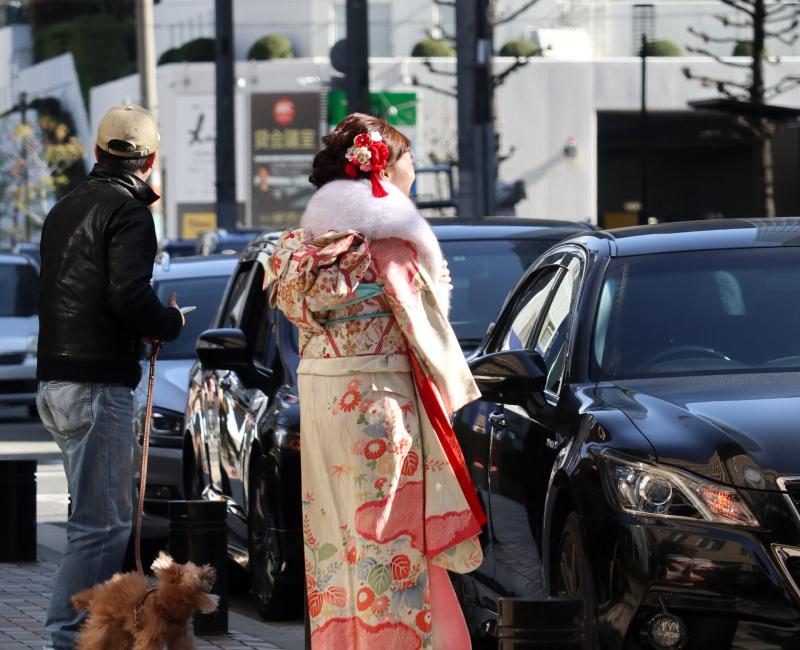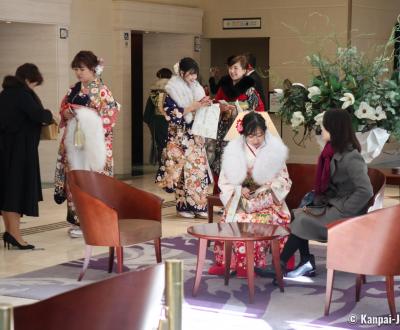Seijin no Hi
The Japanese 20 Years Old Coming-of-age Celebration
Seijin no hi or adult’s day is a Japanese holiday established for young people to celebrate their coming-of-age. A special ceremony, Seijin shiki, is held each year on the second Monday of January, to officially welcome the age of full legal majority, which is still 20 years old in Japan.
The celebration of coming-of-age as a rite of passage existed in Japan since Nara period (710 - 794) at least. In the same spirit as Shichi Go San, the tradition is said to have begun in the nobility, with the Genpuku (元服) ceremony for boys between 12 and 16 years old. They were introduced to their family’s tutelary kami during a Shinto ceremony where they appeared publicly for the first time dressed in adults’ clothes and hairdo.
A ritual to display the change of appearance
The custom was passed down to other social classes over the centuries and was frequently practiced during Edo period (1603 - 1868) among the warriors’ class and the people, in a much simpler version: the boys’ forehead was shaved to create the grown-ups and samurais’ characteristic hairdo.
It was also during Edo period that young women began to have their own ceremony, called Mogi (裳着). It was either celebrated at the same time as they marriage, or between 18 and 20 years old. The appearance of an adult woman was created by the nihongata hairdo, and the blackening of the teeth.
Nowadays, the young women look is certainly what make the coming-of-age celebration so popular: their long sleeves winter kimono 👘, called furisode, has become a symbol of this celebration. This day, and especially the formal ceremony that ensues, is the occasion for involved young Japanese to dress up. Young men do not neglect their appearance either, and if many choose to wear an elegant Western style dark three-piece suit, a great number of them still don the traditional kimono.
The celebration of the coming of age day on a holiday
After WWII, in 1948, the Japanese government revived the tradition to create an impactful event to "encourage young people who start in life with the consciousness of being adults." The date was established on January 15 and the event was named Seijin no hi.
The holidays’ distribution was reformed in 1998, and the system Happy Monday seido (ハッピーマンデー制度) was implemented the next year. This system was designed to avoid a too frequent overlapping of holidays with a weekend by postponing the national holiday on the Monday closest to the initial vacation day. One of the consequences was the creation of "little vacations" of three consecutive days. Since 2000, Seijin no hi is celebrated on the second Monday of January.
Actually, the date may vary according to the regions, for weather condition, especially in the northernmost prefectures, or to foster periods that are easier for young people to come back to their hometown.

What is a Seijin shiki ceremony like?
The official ceremony to celebrate the coming-of-age is named Seijin shiki (成人式, "coming-of-age ceremony") and it is held on the day of Seijin no hi.
This ceremony is usually organized by local communities, mainly municipalities. They set up organization committees with a dozen of members recruited each year among the new young adults. They are in charge of:
- Organizing the ceremony’s details,
- Preparing a commemorative booklet to offer to the participants,
- Hosting the ceremony.
The official ceremony is usually held in a theater or in a conference hall, with municipality representatives and faculty members. Only those who will reach their 20th birthday between April 2 and April 1 of the current year, and who are officially residing in the city are invited. They receive their invitation voucher in December, and they need it to enter the ceremony premises.
Seijin shiki lasts less than one hour and is a much ritualized moment. When everybody is seated, the interventions come one after another in a very formal manner:
- Japan’s national anthem,
- Speeches from the mayor and / or the municipality’s representatives, or other administrative officials,
- Acknowledgements to various associations related with youth, education, etc.
- Greetings from the unavoidable local mascots.
In addition, it is frequent to have one or two 10-year-old deliver a speech to their seniors to show them their admiration, and / or photo slides displaying memorable events of the new adults’ school days, or any other kind of musical highlight.
The organization committee representatives, usually a young man and a young woman, also deliver a speech, in which they talk about their gratitude toward their seniors, and their hopes for the future.
On a side note, this ceremony includes all 20 years old Japanese, whatever their occupation may be at the time: most of the attendants are "common" young people, but there are also famous personalities, top-level athletes and even sometimes a maiko fully dressed in her professional attire.
Big companies and Japan Self-Defense Forces used to organize a Seijin shiki for their employees or members who reached the age of 20, but this practice has lapsed recently.
Since a few years, some municipalities have opened Seijin shiki ceremony to foreign students or interns who turn 20 during their stay in Japan.

The future of Seijin shiki ceremony
Young Japanese, however, are becoming increasingly less interested in this ceremony, whose very conventional format is not adapted anymore to the younger generations.
Moreover, a law passed in 2018 and to be implemented in April 2022, has established the age of majority at 18 years old, to offer the right of vote to a larger population. Thus, many municipalities are reflecting on organizing Seijin shiki on the year of the 18th birthday. However, considering it is already a complicated period in life with the end of high school, university entrance exams and critical life choices, the global trend is to keep the ceremony during the year of the 20th birthday.
The coming-of-age can also be celebrated by a visit to a temple or a shrine. The latter even propose Seijin no hi packages including the renting of a kimono, a photo shooting and prayers for prices ranging between ¥50,000 and ¥200,000 (between ~US$318.80 and ~US$1,275) depending on the options selected.
However, young adults also enjoy organizing their own celebration that are more suited to their taste, beside the formal ceremony. For example:
- Disneyland Tokyo becomes an unofficial annex to Seijin no hi festivities, especially among young women to party and enjoy the moment, as a last parenthesis before adulthood.
- Izakaya pubs welcome crowds of new customers on the holiday’s night. The accession to majority indeed means new responsibilities, but also to be able to legally drink alcohol! In Tokyo, bars and pubs of Shibuya become overcrowded.
Anyway, the ceremony itself is first and foremost secular, and aims at the promotion of social harmony between generations and inside the same age group.
Since a few years, new celebrations related to age have been developing, such as totose no iwai (十歳の祝い, the "10 years-old celebration") or nibun no ichi seijin shiki (1/2成人式, "half-adult ceremony"), that are held in schools, with costumed photo shootings as well. Adults don’t relinquish on celebrating either, with the new trend to celebrate in group the 30th birthday, in a misoji shiki (三十路式, "30 years old ceremony"), although it is more anecdotic.

